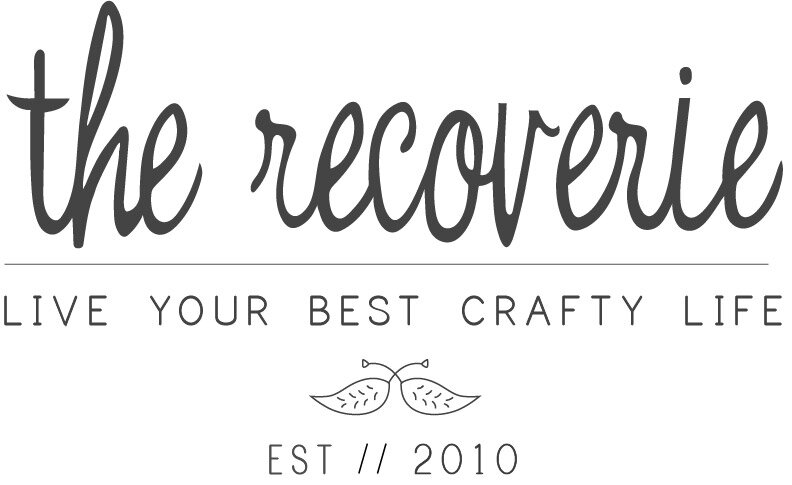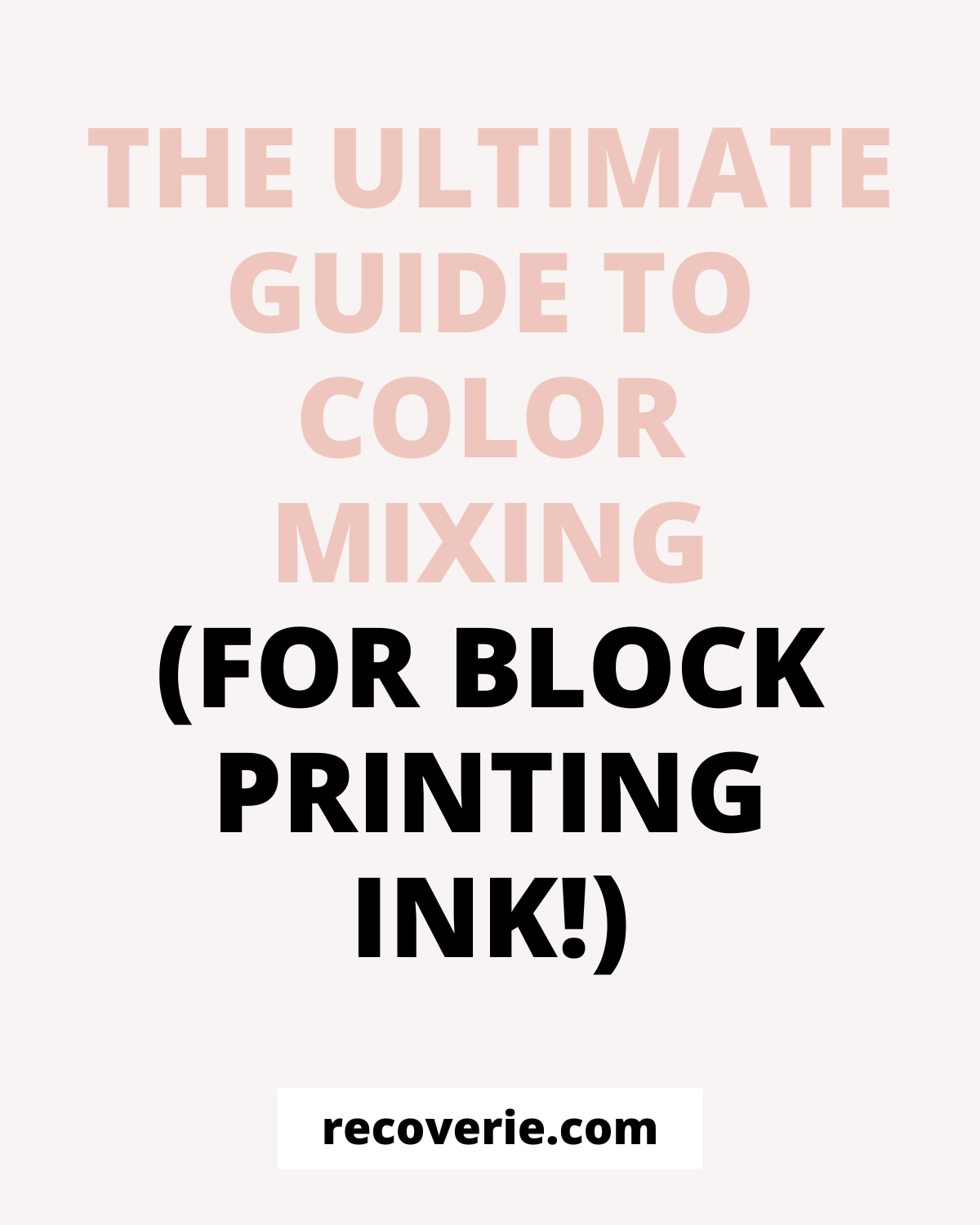The Ultimate Guide to Color Mixing (for block printing ink!)
Note: This post contains affiliate links for supplies that I have tested and recommend! Please use them if my research and writing inspire you to purchase supplies and make cute things. Thank you for supporting my small business!
<<>>
It was 2010.
I was standing in line at the art store in San Francisco, tapping my foot impatiently as I waited for my turn to pay.
In my basket I had some random art tools, a few colored pens, but most importantly, a brand new tub of the prettiest turquoise block printing ink.
Waiting for me at home was a 3/4 of the way finished art project…my first linoleum block printing project. All that I needed to finish it was the right color paint…or so I thought.
Long story short, I went home, beautifully printed my first fabric print ever, only to have the ink completely wash out of the fabric the following day when I put it in the laundry. Argggh.
The point of this story is not to bring back sad sad memories of when I was a ding dong and didn’t bother to read labels, but to show you how I’ve already screwed things up so many times with block printing and paints, that I can help you avoid making similar mistakes! (Hooray!)
Thus, this in-depth guide to color mixing for block printing inks.
This guide is broken up into a few different sections: What colors to buy, block printing paint tips, and Quick color mixing tips.
I also have a detailed one page printable below with specific measurements of what colors I use to mix what shades…well, as specific as I can be, I just eyeball most things ;)
Side note - I use Jacquard brand block printing ink for most of my projects. Most of the tips I’ll give you will apply universally, but there may be slight differences between paint brands.
I’ll also go a little into specialty colors like metallics, process colors, etc.
Section 1 - What colors to buy
Some brands of block printing ink actually offer quite a few custom colors if you need something very specific. I usually work with about 8 colors total and can mix almost anything…with a few exceptions.
If you’re just starting out with printing, you’re going to need a few things to get started. Fortunately, most of the supplies are pretty affordable as art supplies go.
First, you’re going to need some ink. If you want a full range of colors, here’s what I recommend purchasing when you’re starting out. (The 4 oz size tubs are more than enough for small to medium size projects.)
Red
Yellow
Blue
Black
White
Brown
Violet
Navy
With this arsenal of 8 colors, you can create a ton of different color options by mixing. You can always purchase pre-mixed colors, but with these basics, it’s kind of silly.
*UPDATE: After extensive use of the colors above, I would now say that I still have never used the brown, and would probably swap that out for a pre-mixed magenta. I tend to mix black into darken colors and it’s hard to make bright pinks without magenta. But it also depends on the colors you like to use :)
Also, I know there are many shades of blue, yellow, red, etc. Just pick the ones you like that you think you’ll use the most. It won’t make a huge difference.
Ok. But why these specific 8? Here’s why:
Red - is a primary color
Yellow - is a primary color
Blue - is a primary color
Black - can make any color shades darker
White - can make any color shades lighter
Brown - is really difficult to mix (unlike in other types of paint, like watercolor)
Violet - is difficult to mix. Often comes out muddy and gross
Navy - is difficult to mix. Often comes out muddy and gross
The only colors you can’t mix with this list are colors that are super super bright and neon (especially pink), and metallic type paints (but, duh, those are special).
Within different brands the exact colors may vary. For example, a Red for Speedball will probably look different that the Red for Versatex. Again, not a huge deal, so pick what you like.
Section 2 - block printing Paint Tips
Brands of ink I have used: Jacquard, Versatex (also under Jacquard label), and the Speedball screen printing inks in the 4oz tubs. I have found all 3 of these brands to be very effective with not many differences in how my designs come out. So use whatever you prefer.
Be sure that your ink is for FABRIC…if you are printing on fabric. If it says, “Block printing ink”, it could easily just be for paper printing. Unless it says “heat set” or “fabric ink” it will probably wash out of your fabric. So read the labels carefully!
The inks I use are water-based screen printing inks. I use these because they are thick, roll nicely, and are heavily pigmented. Be aware that there are also very liquid-y paints under these same brand names that are labeled “textile inks” which is not what you want. When in doubt, give the container a shake. If it’s very liquid-y it won’t work!
If given the option, always choose “Opaque” inks. These will show up the best on your fabric, especially darker colors of fabric.
If it says “Process Color” or something similar, avoid it. Those tend to be more transparent and are better left for the screenprinting folks.
Can you use regular fabric paint and not screenprinting ink specifically? I mean, probably…as long as you can set it somehow. But this article is specific to my printing process which only involves screenprinting ink. Experiment and report back!
Metallic colors - I’ve gone through a handful of golds and coppers, but as cool as they look in their pretty little tubs, I have not been blown away by the results. But of course, feel free to play around with them!
Another option that you could try is these opaque iridescent inks from Speedball. I haven’t personally tried these ones, but they look promising because they are opaque.
Section 3 - Quick Color Mixing Tips
Mixing Pastel Colors
Always start with a big blob of white ink. Then slowly add in your color to tint it from there. If you start out with a medium light blue then add white to make it sky blue, you will end up using so much white paint, and may never make it to the right color. Trust me on this one. Work backwards!
Mixing Muted Colors
Go easy on the black. You can use brown or another dark color to lower the saturation, but black will be a true mute. Just take your medium range color and start adding in VERY little black until you get the hang of it. Otherwise, you’ll end up having to start over.
I’d also recommend reading through my Ultimate Guide to Block Printing to find out everything you’ll need to know to create your own gorgeous block prints at home.
So that’s a quick summary of a lot of things I’ve learned through block printing over the years. I hope this was helpful! Let me know what you think in the comments!
<<>>






